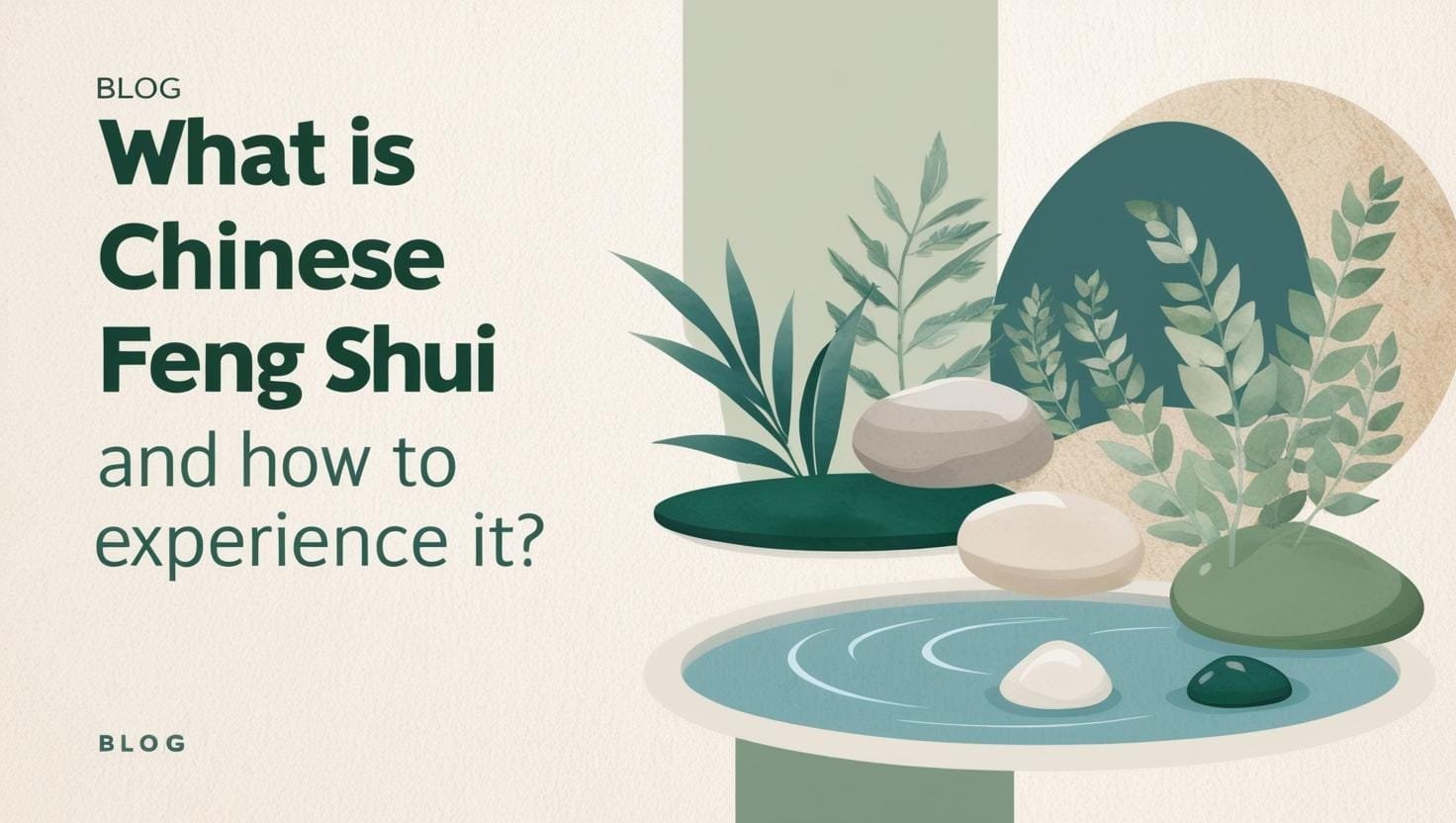“`html
Discovering Harmony: What Is Chinese Feng Shui and How to Experience It
Embarking on a journey to China is more than just seeing the sights; it’s about immersing yourself in a rich tapestry of ancient traditions and philosophies. One of the most profound of these is Chinese Feng Shui, an age-old practice that aims to harmonize individuals with their surrounding environment. Here at jusha.travel, we believe that understanding China culture enhances your travel experience, and exploring Feng Shui is a fantastic way to deepen your appreciation for this captivating country. This travel guide will walk you through the basics of Feng Shui and suggest how to incorporate this into your cultural experience in China, allowing you to not only see but also feel the essence of traditional practices throughout your travels.
The Core Principles of Chinese Feng Shui
Chinese Feng Shui, literally translated as “wind and water,” is an ancient system of aesthetics believed to use the laws of both to improve life by receiving positive Qi. At its heart, Feng Shui seeks to balance the five elements – wood, fire, earth, metal, and water – to create harmonious environments. It’s about positioning objects, buildings, and even entire cities in ways that promote the flow of positive energy (Qi) and ward off negative influences. From the layout of rooms to the orientation of buildings, every aspect is considered in relation to the surrounding landscape and the compass directions.
- The Five Elements: Wood, Fire, Earth, Metal, and Water interact in cycles of creation and destruction. Maintaining balance between these elements is essential.
- Yin and Yang: The complementary forces of Yin (passive, dark, feminine) and Yang (active, light, masculine) must be balanced for harmony.
- Bagua Map: This octagonal diagram is used to analyze the energy of a space, mapping areas to different aspects of life, such as career, relationships, and knowledge.
Understanding these basic principles is your first step towards appreciating Feng Shui’s role in China culture.
Experiencing Feng Shui in Chinese Architecture and Gardens
One of the most tangible ways to experience Chinese Feng Shui is through the country’s stunning architecture and meticulously designed gardens. Traditional Chinese buildings, from humble homes to imperial palaces, are often constructed with Feng Shui principles in mind. The orientation of buildings, the placement of doors and windows, and the use of colors and materials are all carefully considered to maximize positive energy flow.
Chinese gardens are epitomes of harmony and balance, designed to mimic natural landscapes and evoke a sense of tranquility. Features like winding paths, carefully placed rocks, flowing water, and strategically planted vegetation are all used to create a landscape that promotes well-being. The Forbidden City in Beijing and the Humble Administrator’s Garden in Suzhou are prime examples of how Feng Shui influences the layout and design of significant landmarks. As you explore these sites, pay attention to how the elements are arranged and how the space makes you feel – this is Feng Shui in action. This is a fantastic cultural experience that allows you to connect with the traditional practices deeply rooted in Chinese society.
Practical Feng Shui Tips for Travelers in China
You don’t need to be a Feng Shui master to incorporate its principles into your travel guide! Here are some practical ways to enhance your experience in China using Feng Shui:
- Hotel Room Selection: When booking a hotel room, consider the direction the room faces. South-facing rooms are considered auspicious, bringing warmth and positive energy.
- Arranging Your Space: Upon arrival, take a moment to organize your belongings. Keep your space tidy and clutter-free to allow energy to flow freely.
- Color Choices: Be mindful of the colors you wear and surround yourself with. Red is considered lucky and auspicious in Chinese culture, while green promotes growth and renewal.
- Nature Connection: Spend time in nature. Parks, gardens, and natural landscapes are excellent places to recharge and connect with positive energy.
By integrating these simple practices, you can create a more harmonious and enjoyable travel experience. Remember, Chinese Feng Shui is about creating balance and harmony in your environment, wherever you may be.
Feng Shui in Modern China
While deeply rooted in history, Chinese Feng Shui continues to influence modern life in China. From urban planning to interior design, Feng Shui consultants are often consulted to ensure that buildings and spaces are aligned with positive energy flows. Many businesses incorporate Feng Shui principles to attract prosperity and success. Even in everyday life, many Chinese people continue to practice Feng Shui, arranging their homes and offices to promote good health, wealth, and relationships.
Observing how Feng Shui is integrated into contemporary society offers valuable insights into the enduring power of traditional practices in China. It’s a testament to the continuous relevance of China culture in a rapidly modernizing world.
Embrace the Harmony of Feng Shui on Your China Journey
Exploring Chinese Feng Shui offers a unique window into the heart of China culture. Whether you’re admiring the architectural precision of ancient temples or incorporating simple Feng Shui tips into your daily routine, understanding these traditional practices will undoubtedly enrich your cultural experience. As you plan your trip with this travel guide, remember to embrace the principles of harmony and balance, allowing the positive energy of Feng Shui to guide you throughout your travels.
Ready to delve deeper into the wonders of China? Share your thoughts on Feng Shui in the comments below, and visit jusha.travel for more China travel inspiration! Explore our related articles to continue your journey of discovery.
“`


2 comments
[…] can engage with practices like acupuncture in China for deeper cultural […]
[…] This city, with its blend of spirituality, history, and vibrant culture, perfectly embodies China Taoist culture and provides an unforgettable experience for culture enthusiasts. From exploring Taizhou historical […]